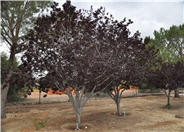
Common name:Krauter Vesuvius Flowering Plum
Botanical name:Prunus cerasifera 'Krauter Vesuvius'
The 'Krauter Vesuvius' is a smaller growing, flowering plum that grows to 18' high by 12' wide. Its leaves are purplish black throughout the growing season, and the flowers have a light pink color.
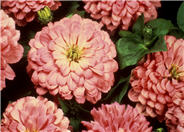
Common name:Garden Zinnia
Botanical name:Zinnia elegans
This annual will grow to about 4' tall and 2' wide. It has oval leaves with flowers that come in a variety of colors and bloom in spring, summer, and fall.

Common name:Rosemary
Botanical name:Rosmarinus officinalis
Rosemary is hardy in full sun areas where winter temperatures do not drop below 10 degrees F. They can be grown in a clay pot with well-drained, porous soil in bright indoor light, and will also flourish on the backporch in spring, summer and fall. Its beautiful, slowly trailing stems and shiny slender leaves are perfect for showing off the small, light blue flowers that blossom in the summer. -Holland WIldflower Farm
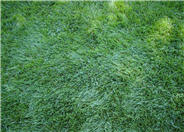
Common name:Tall Fescue, Marathon (turf blend)
Botanical name:Festuca arundinacea 'Marathon'
This grass is best when kept at about 2"-2.5" high, but it has a root depth of about 6'. It is a beautiful, dark green color all year and is used in a variety of locations.
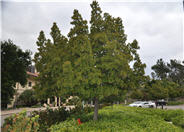
Common name:Toyon, Christmas Berry, Calif. Holl
Botanical name:Heteromeles arbutifolia
Toyon is a California native evergreen shrub that grows 8'-15' high and spreading 2'-3'. It has leathery toothed leaves, white summer flowers and clusters of red winter berries. It tolerates full sun or partial shade, heat, smog, wind and heavy or light soils. It is drought tolerant, attracts beneficial insects and hummingbirds. - Cornflower Farms
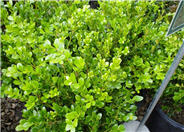
Common name:Japanese Boxwood
Botanical name:Buxus microphylla japonica
Japanese Boxwood is often used as a hedge. It is compact, with small bright green leaves. It can reach 4'-6' tall and wide or be kept smaller through pruning. It can be sheared to shape. It does better in areas with milder winters.
| Designer: Homeowner | Beautiful Statue |
Photographer: GardenSoft |
Soils and Compost:
Practice grass-cycling by leaving short grass clippings on lawns after mowing, so that nutrients and organic matter are returned to the soil.
Water Saving Tip:
Replace turf with groundcovers, trees, and shrubs. If you have areas where no one uses the grass, patches that do not grow well, or a turf area too small to water without runoff, consider replacing the turf with water-efficient landscaping.
Integrated Pest Management:
Attract, or buy beneficial insects such as ladybugs and lacewings to control pest outbreaks in your garden.
